The headline is true. I haven’t purchased a new action figure since before New Year’s Day 2022. That means it’s been at least eight months since I have added a new figure to my toy box. I’ve learned a few things from the experience, and remembered some things I knew but I had forgotten. So, let’s break it down, starting with this question: Why the toy drought, Dave?
Actually, let’s start with a confession: I have actually added a figure to my collection during this time. It was a threezero Hulkbuster. However, I pre-ordered it a couple years ago in early lockdown, and it was delayed several times, so I don’t consider it new, since I decided to buy it long before 2022 started. So with that out of the way, let’s get back to the question of why.
I started noticing that I had a serious backlog of figures in my collection that I never shot. In fact, I had several I hadn’t even taken out of their packaging yet. So I decided to take an intentional break from buying new figures and try to get some images from those figures that were on my shelf but still in their unopened boxes. Seems all practical, right? And I did shoot — as much as I ever have. As a result, my backlog of unopened figures never went down, so I never felt the need to buy new ones.
This has led to some interesting changes in how I approach toy photography, starting with the most surprising to me:
I packed fewer figures when I travel
When I travel I used to bring as many different figures as I could carry. I had a large camera backpack that I filled to the brim with figures. Sometimes I’d have 20 different figures with me. I tended to bring my standards, like my fave character Deadpool, as well as a selection of my latest toy acquisitions. I managed to get several trips in during these last eight months: a weeklong cruise, three weeks in Canada, as well as several weekend road trips. Each time I packed fewer and fewer figures. In fact, on my last weekend road trip I only brought one figure, a Baby Groot.
I tended to only shoot a small subset of those toys, so it just seemed more logical to not being as many. However it had another interesting side effect.
I found it easier to get into the creative zone
I actually find it very hard to slow down and get into the right mindset to take toy photos when I travel. This is especially true of when I am exploring a new area. I like exploring, but toy photography takes time. So I have to decide if I want to use my time exploring more places, or slowing down and taking toy photos at places I have already been.
If I do decide to slow down and get out the toys and make some toy photos, the next question becomes what shot am I going to make? What is the story I want to tell? How do I want to frame it? How can I take advantage of the place I find myself in? Add to all of those decisions the one about which of the dozen figures in my pack do I want to even shoot?
That is a lot of things to think about, and it makes slowing down to take a photo a harder thing to do. Each figure has its own personality, and style. The selection of the figure can dramatically affect how I would approach making a photo in a given location. Even simply things like the scale of the figure (12″ vs 6″ vs LEGO for example) can dramatically affect how I approach a shot. Different lenses, different framing, and how I incorporate backgrounds into the shot. It is a heck of a lot to think about if you are in a new place and have a couple dozen options to select from.
Don’t get me wrong, it is not like it’s completely overwhelming or an impossible thing to figure out if I had to. It is just that having to make all those decisions, often done subconsciously at first, takes some brain power. The subconscious CPU that is my brain is always scanning the world to come up with creative ideas. Those ideas then filter to my conscious brain as inspiration. The more things I see, and the more connections that need to be made about those things, the less likely that my brain is going to finish processing a scene and give me an idea for a shot before I have already moved on to the next thing.
Limitation breeds creativity
Reducing the number of toys in my pack to only one has several advantages. The largest being the whole decision tree of what figure to use, and all the decisions about framing and lens selection that goes along with it, goes away. For example, let’s pretend the only figure I have in my pack is Wall-e. When I walk around a new area and take in my surroundings, my brain no longer has to scan the area for places where any toy could be, then scan its memory of the toys in my pack to see if any of those will work in that spot. Instead, it can just take in the area and just look for places that are suitable for Wall-e. This makes it much easier to reason about the world.
Limiting myself to one toy at a time makes it easy see the world through the eyes of that toy. That, in turn, makes it easier to make toy photos. Personally, I find the hardest part about being creative is simply starting. I love being in a creative flow and I am a happy camper when I am in that zone. But I am also lazy by nature. As a result, I need to fight inertia to shift into the mental zone where I am setting up toys and bringing the camera to my eye. Often that inertia just involves having a solid idea. The fewer things that get in my way of my subconscious generating ideas, means the easier I get into that zone, and the happier I will be.
There is a well-documented phenomenon called “decision paralysis.” The more variables that are involved in a decision, the harder that decision is to make. If there are too many options, it can become almost impossible to weigh all the pros and cons, which leaves the decision maker unable to come to a conclusion. The fewer choices one has, the quicker one can determine what do to, and then get on with the business of acting on that decision. In toy photography terms: The quicker I can decide what toy to shoot, the quicker I can get into the shooting mode.
One example of this happened when I was on a photowalk in Toronto. I noticed some bubbles were wafting into the street. I looked up and saw that they were coming from a bubble machine sitting in a second story window. I knew I wanted to take advantage of the situation, because it was one of those serendipitous magic moments, but I wasn’t sure how. There are a lot of ways one could capture bubbles like this. However, since I only had Wall-e with me, the decision was pretty straightforward. I pulled him out of my pack, set him on a ledge, and captured a shot of Wall-e playing with the bubbles.
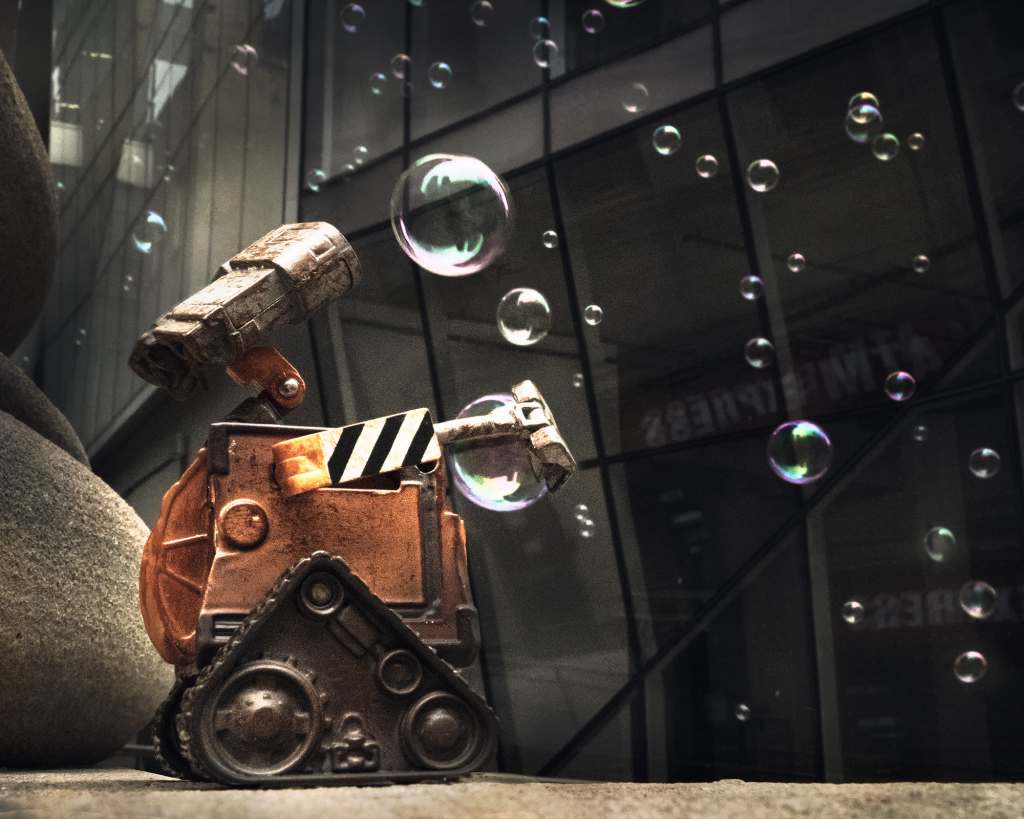
Another way limitation breeds creativity is that it encourages thinking of different ways to make photos with the figure. I don’t know about you, but I have found that I tend to take the same photo of my figures. For example, any humanoid figure I get, the very first thing I do is try to get it into what Deadpool calls the “superhero landing” pose (they all do it, it’s very hard on the knees). If the figure can get into that pose, then I make a photo of it. Then, since I have so many other figures, my attention begins to wander and I go onto the next figure and see if it can get into the same pose. As a result, I tend to have a lot of photos of figures in superhero landing poses. They feel like different photos because they are of different characters, but really, it’s the same photo taken multiple times.
When I limit myself to a single figure, I quickly get past the superhero landing phase, and start to look for other ways to make images of the same figure. As a result my photos become more varied and interesting over time. I have found that I have shifted from simply trying to capture the figure, and started playing around with more creative uses of light such as utilizing those f/22 sunbursts, light leaks, and lens flares in more creative ways to enhance my photos.
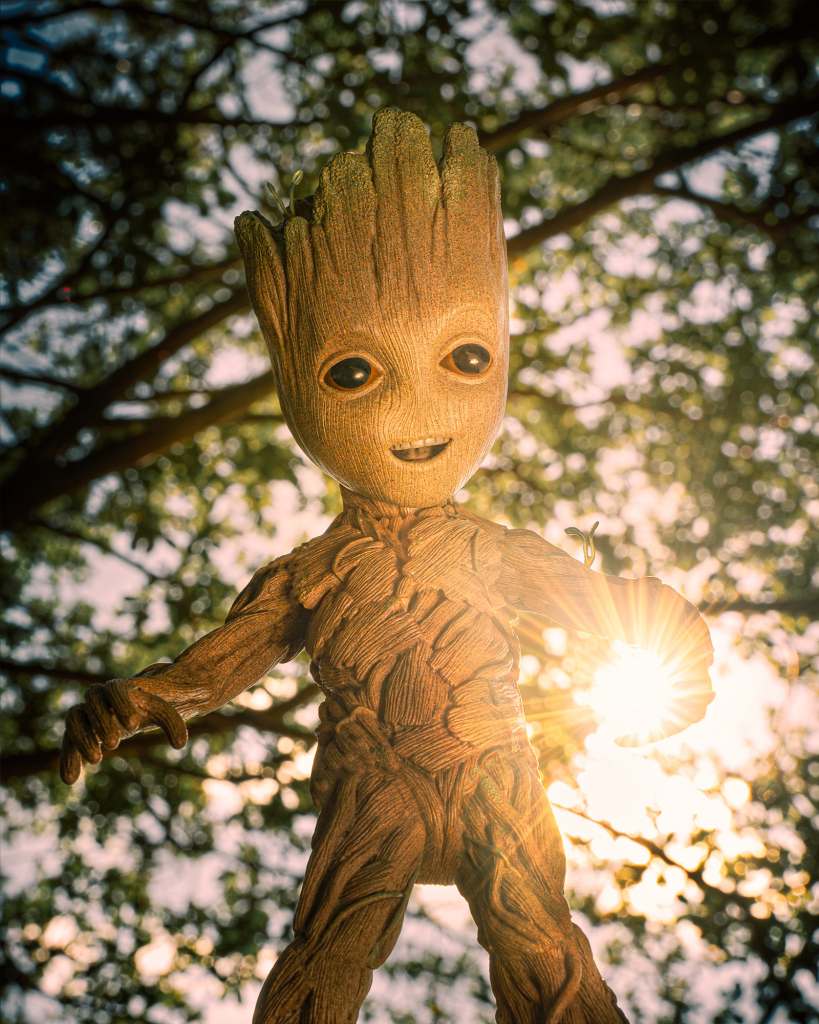
Fewer toys is cheaper, too
Buying all those action figures can make a huge dent in the old bank account. Not spending money on figures allows me to spend it on traveling, and having new experiences. Those experiences feed inspiration. And inspiration leads to creativity. It is a virtuous cycle My accountant likes it better, too.
It is also nice not being caught up in the toy release marketing cycle. I no longer have to worry about if a figure is sold out, because I’m not likely to buy it anyway, and even if I did decide I really wanted it, I know that my creativity doesn’t depend on it. If it is still on the shelf, cool. If not, it is nothing to stress over. Stress-free living is a valuable thing, y’all.
So, am I better off?
I actually believe I am better off with fewer toys in my toy box, and it is a strategy I am going to continue to utilize as I go forward. I suffer less decision paralysis, and tend to take more images when I travel. I can get into the creative flow easier, and when I do, I tend to be more open to different ways of composing and shooting those images. Not having the hit on my wallet is a bonus. Whats not to like?
This doesn’t mean I am never going to buy new figures again. I suspect I will be getting plenty in the future. However, I will be much more selective about the ones I get, and ask “do I really need it, or can I just use what I have already?” More toys does not necessarily mean more photos, or even better photos. Simple is often the clearer and more productive way forward.
[dave]



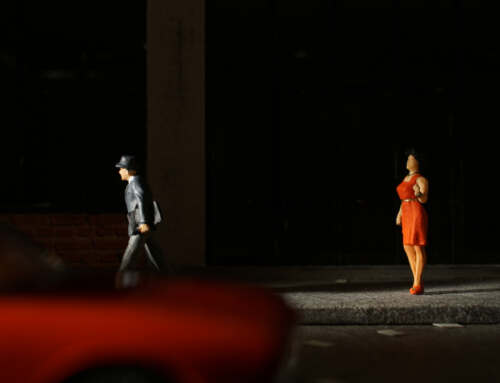
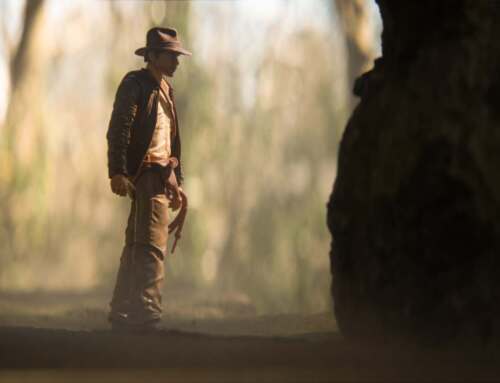
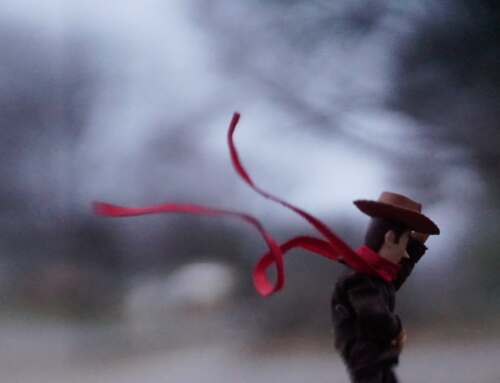

Leave A Comment